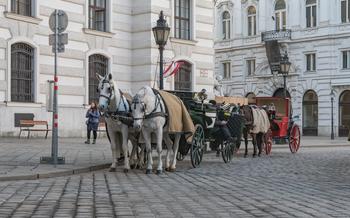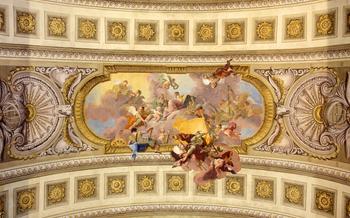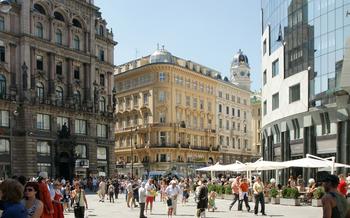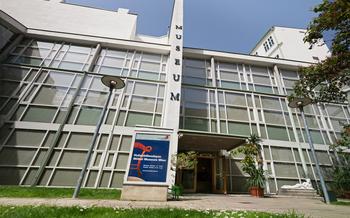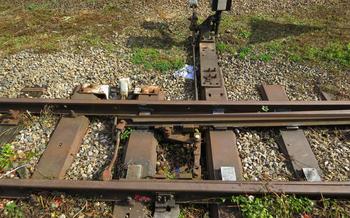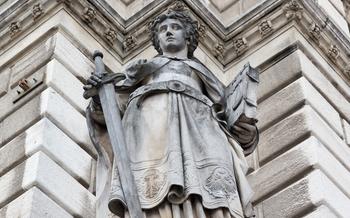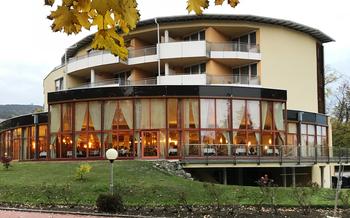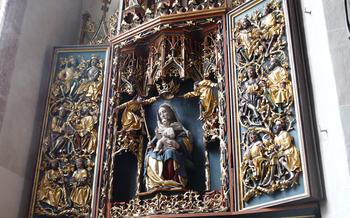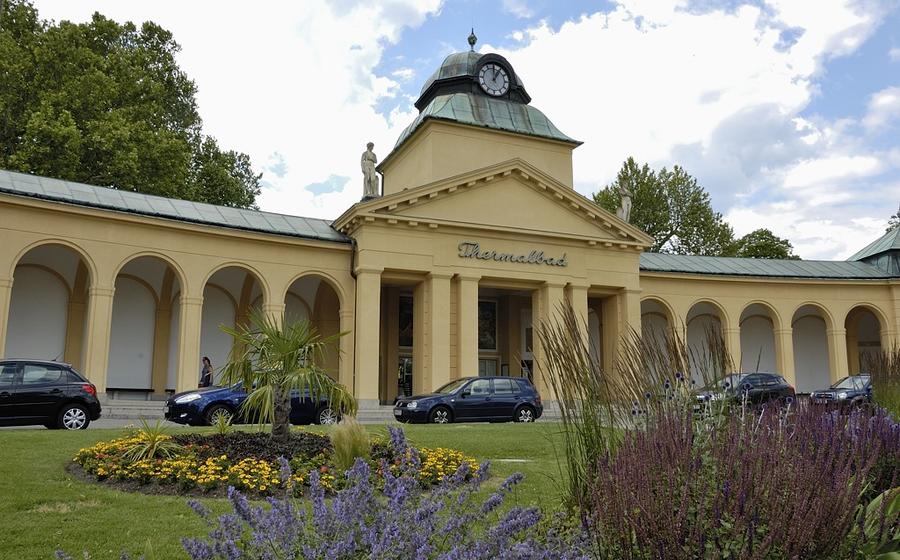
Austrian National Library, Vienna
- History of the Austrian National Library, Vienna
- Collections
- Architecture and Design
- Reading Rooms and Research Facilities
- Vienna's Hofburg
- Tickets, Tours, and Accessibility:
- Surrounding Area
- Educational Programs
- Conservation and Preservation: Safeguarding the National Treasures
- Local Legends and Anecdotes
- Photography and Social Media
- Insider Tip:
History of the Austrian National Library, Vienna
Established in 1526 by Emperor Ferdinand I as the Court Library, the Austrian National Library is a treasure trove of knowledge and cultural heritage. Over the centuries, the library has grown through acquisitions, donations, and exchanges, amassing an impressive collection that spans diverse subjects and formats.
During the reign of Emperor Charles VI, the library gained international recognition and became one of the largest libraries in Europe. The 18th century was a period of significant growth and development, with the library expanding its collection of manuscripts, printed books, and maps.
In the 19th century, the library moved to its current home in the Hofburg Palace, the former imperial residence of the Habsburg dynasty. The move provided the library with much-needed space and allowed for further expansion and organization of its vast holdings.
Throughout its history, the Austrian National Library has undergone several renovations and modernizations to meet the changing needs of its users. Today, it stands as a testament to Austria's rich cultural heritage and serves as a vital resource for scholars, researchers, and visitors alike.
Collections
The Austrian National Library in Vienna boasts a vast and diverse collection of over 12 million items, making it one of the largest libraries in the world. Its holdings encompass a wide range of materials, including books, manuscripts, maps, prints, photographs, and music.
The library's manuscript collection is particularly noteworthy, containing over 150,000 items dating from the 9th to the 21st centuries. Highlights include the "Codex Vindobonensis," a 6th-century manuscript of the Bible, and the "Nibelungenlied," a 13th-century epic poem.
The library also houses an impressive collection of rare books, including over 200,000 volumes printed before 150Among these are the "Gutenberg Bible," one of the first books printed using movable type, and the "Schedelsche Weltchronik," a lavishly illustrated chronicle of the world from its creation to the year 149
The map collection, comprising over 250,000 items, documents the history of cartography from the 15th century to the present day. Highlights include the "Tabula Peutingeriana," a 13th-century Roman road map, and the "Atlas Maior," a 17th-century atlas by the Dutch cartographer Joan Blaeu.
The library's print collection, with over 1 million items, includes works by Albrecht Dürer, Rembrandt, and Francisco Goya. The music collection, with over 5 million items, features manuscripts and printed music from the Middle Ages to the present day, including works by Mozart, Beethoven, and Schubert.
The library's collections continue to grow through donations, purchases, and exchanges. Recent acquisitions include the personal library of the Austrian writer Stefan Zweig and a collection of medieval manuscripts from the Benedictine Abbey of Göttweig.
Architecture and Design
The Austrian National Library in Vienna is housed in a magnificent building that is a testament to the grandeur and opulence of the Habsburg dynasty. Constructed in the 18th century, the library's main building is a masterpiece of Baroque architecture, characterized by its elaborate ornamentation, sweeping staircases, and soaring ceilings.
The exterior of the library is adorned with intricate sculptures, intricate carvings, and decorative elements that reflect the Baroque style's emphasis on drama and movement. The main entrance is particularly impressive, with its grand portico supported by imposing columns and topped by a pediment featuring allegorical figures.
The interior of the library is equally stunning, with a series of grand halls and reading rooms that showcase the library's vast collection of books and manuscripts. The State Hall, the library's most famous room, is a breathtaking sight, with its soaring dome, ornate frescoes, and rows of book-lined shelves that reach up to the ceiling. The library's other reading rooms are also impressive, each featuring unique architectural elements and beautiful furnishings.
In recent years, the library has undergone extensive renovations to restore its historic grandeur and improve accessibility. These renovations have included the restoration of the State Hall's frescoes, the installation of new lighting systems, and the addition of ramps and elevators to make the library more accessible to visitors with disabilities.
Reading Rooms and Research Facilities
The Austrian National Library boasts a remarkable range of reading rooms, catering to the diverse needs of visitors and researchers. The Main Reading Room is a awe-inspiring space, exuding a palpable sense of history and scholarship. Its grand, vaulted ceiling, lined with intricate frescoes, creates an ambiance that encourages both contemplation and creative thought.
Research Facilities: - The library offers a comprehensive array of research facilities to support scholarly pursuits. A vast collection of online resources, including digital archives, databases, and catalogs, is accessible to visitors, facilitating in-depth research and exploration of the library's holdings. - Specialized reading rooms are available for researchers working on specific subjects or collections. These rooms provide dedicated workspaces, tailored resources, and expert assistance to enhance the research experience. - The library's Reading Room for Rare Books and Manuscripts is a haven for scholars working with precious and delicate materials. This specialized space ensures the proper preservation and handling of unique and irreplaceable items from the collection.
Vienna's Hofburg
The Austrian National Library is situated within the magnificent Hofburg Palace, a former imperial residence that served as the seat of the Habsburg dynasty for centuries. The Hofburg complex, with its sprawling courtyards, ornate facades, and grand halls, is a testament to the power and influence of the Habsburgs, who ruled over the vast Austro-Hungarian Empire for over 600 years.
The Hofburg's history dates back to the 13th century when it was initially a small castle known as the "Neue Burg." Over time, the castle underwent numerous expansions and renovations, transforming it into a vast palace complex. The Habsburgs used the Hofburg as their primary residence and the center of their administrative and political activities.
Today, the Hofburg houses several museums, including the Sisi Museum, which offers a glimpse into the life of Empress Elisabeth of Austria, popularly known as Sisi. Visitors can also explore the Imperial Apartments, which showcase the opulent living quarters of the imperial family. The Hofburg also serves as the official residence of the President of Austria.
In addition to the Austrian National Library, the Hofburg complex is home to other notable attractions, such as the Spanish Riding School, renowned for its breathtaking performances of classical horsemanship. The Hofburgkapelle, or the Imperial Chapel, is another architectural highlight, featuring stunning frescoes and intricate woodwork.
Exploring the Hofburg is a journey through history, allowing visitors to delve into the grandeur and legacy of the Habsburg dynasty. Its combination of architectural masterpieces, museums, and cultural institutions makes it a must-visit destination in Vienna.
Tickets, Tours, and Accessibility:
Visiting the Austrian National Library, Vienna is an enriching experience, and planning ahead ensures a smooth and enjoyable visit. General admission tickets are reasonably priced, and guided tours are available for a deeper dive into the library's treasures. These tours offer insights into the history, architecture, and highlights of the collection, making them an excellent option for history enthusiasts and first-time visitors.
Group discounts are available for larger parties, making it an affordable option for educational groups or travel companions. The library is committed to accessibility, providing wheelchair access, ramps, and elevators to accommodate visitors with disabilities.
To avoid crowds and have a more intimate experience, consider visiting during the off-season or on weekdays. The library's website offers up-to-date information on opening hours, ticket prices, and guided tour schedules, ensuring a hassle-free visit to this cultural gem.
Surrounding Area
The Austrian National Library is situated in the heart of Vienna, within the historic Hofburg complex. Surrounded by rich history and cultural attractions, the area offers a vibrant atmosphere and plenty of opportunities for exploration.
Just a short stroll away, visitors can immerse themselves in the grandeur of the Hofburg Gardens, a picturesque oasis known for its manicured lawns, charming statues, and blooming flower beds. The gardens serve as a tranquil retreat, offering a peaceful escape from the city's hustle and bustle.
Within walking distance, the Kunsthistorisches Museum and the Naturhistorisches Museum stand as testaments to Vienna's cultural heritage. These world-renowned museums house impressive collections of art and natural history, showcasing masterpieces from across the centuries.
The surrounding neighborhood is dotted with charming cafes, cozy restaurants, and unique shops, inviting visitors to indulge in Viennese culinary delights and explore the city's vibrant shopping scene.
For those seeking an extended cultural experience, the historic center of Vienna lies just beyond the Hofburg's gates. Here, visitors can wander through cobbled streets, admire architectural wonders like St. Stephen's Cathedral, and soak in the vibrant atmosphere of a city steeped in history and culture.
Educational Programs
The Austrian National Library is committed to fostering education and research by offering a diverse range of educational programs and initiatives. These programs cater to various audiences, from school children to scholars and lifelong learners.
Workshops and seminars are organized throughout the year, focusing on different aspects of the collection. These sessions provide participants with an in-depth understanding of the library's holdings and their significance. Topics covered include manuscript studies, rare book conservation, and the history of printing.
The library also collaborates with schools and universities to develop educational programs that encourage students to explore the world of books and engage with primary sources. These programs include guided tours, workshops, and research projects that allow students to learn about the library's collection and its relevance to their studies.
Outreach programs are another important aspect of the library's educational mission. The library actively participates in events such as book fairs, festivals, and exhibitions to showcase its collections and promote reading and research. These events provide an opportunity for the library to connect with the wider community and inspire a love of learning in people of all ages.
Conservation and Preservation: Safeguarding the National Treasures
The Austrian National Library, Vienna, takes immense pride in its role as a guardian of cultural heritage. To ensure the preservation of its vast and irreplaceable collection, the library has implemented a comprehensive conservation program. Rare and fragile items receive specialized care and attention to prevent deterioration and ensure their longevity. The library employs skilled conservators who work tirelessly to restore and repair damaged items, using advanced techniques and materials.
In addition to traditional conservation methods, the library also embraces modern technologies to safeguard its collection. It utilizes digital imaging and digitization to create high-resolution copies of manuscripts, books, and other materials. This allows researchers and the general public to access and study the collection without handling the original items, minimizing the risk of damage. The library's ongoing digitization efforts also ensure that its treasures are preserved for future generations in a durable and accessible format.
The library's commitment to conservation extends beyond its own walls. It actively collaborates with other institutions and organizations to share knowledge and expertise in the field of preservation. It participates in international conservation projects and initiatives, contributing to the collective effort to protect and preserve the world's cultural heritage.
Local Legends and Anecdotes
The Austrian National Library is steeped in history and has its fair share of legends and anecdotes. One popular tale tells of a mysterious manuscript known as the "Codex Vindobonensis," which is said to contain ancient secrets and prophecies. Legend has it that the codex was discovered in a hidden chamber of the library by a young scholar who was promptly struck blind as punishment for his curiosity.
Another intriguing story surrounds a rare book collection known as the "Bibliotheca Magica," rumored to contain powerful spells and incantations. It is believed that the collection was assembled by a group of alchemists and sorcerers who used the library as a meeting place. Visitors to the library often claim to feel a strange presence in the air, attributed to the spirits of these long-gone practitioners of the arcane.
In the annals of the library's history, one name stands out: Wolfgang Amadeus Mozart. The legendary composer was a frequent visitor to the library, where he would spend hours poring over musical scores and conducting research for his compositions. It is said that some of his most famous works, including "The Magic Flute" and "Don Giovanni," were inspired by his time spent within the library's hallowed halls.
Photography and Social Media
The Austrian National Library welcomes photography and social media as a means of sharing the beauty and significance of its collections with the world. However, certain guidelines must be followed to ensure the preservation of the library's artifacts and the privacy of its visitors.
Photography is permitted in most areas of the library, except in specialized reading rooms or during special exhibitions where flash photography or tripods may be prohibited. Visitors are encouraged to capture the stunning architecture, intricate details, and rare items on display.
When sharing photos or videos on social media, using the hashtag #AustrianNationalLibrary is encouraged to connect with other visitors and enthusiasts. Tagging the library's official social media accounts (@AustrianNationalLibrary) allows the library to share and celebrate your experiences.
Remember to be respectful of other visitors and maintain a quiet atmosphere while taking photos or recording videos. The library's serene environment is conducive to study, research, and contemplation, and it is essential to uphold this ambiance for all visitors.
Insider Tip:
As a seasoned traveler and avid reader, I highly recommend visiting the Austrian National Library during the annual Hofburg Silvesterkonzert, a New Year's Eve concert held within the imperial palace's grand halls. This exclusive event offers a magical blend of classical music, stunning architecture, and a festive atmosphere. Dress in your finest attire, immerse yourself in the grandeur of the Hofburg, and let the enchanting melodies transport you into a realm of cultural delight. The concert is a true feast for the senses and a perfect way to ring in the New Year with an unforgettable experience.

